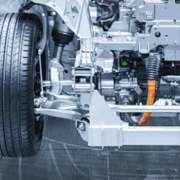The Truth About Precision Shims in Modern Aircraft
Aircraft shims represent far more than simple spacer components. These precision elements directly control safety margins and performance parameters across modern aviation systems. The aerospace industry operates under strict tolerance requirements where deviations measured in fractions of millimeters determine the difference between reliable operation and catastrophic failure.
Aircraft systems demand exact positioning to function properly. Slight misalignments create cascading effects that reduce performance, accelerate component wear, and compromise operational safety. Manufacturing variances occur naturally during production, making shims essential for achieving the precise fits required in aerospace applications. These components reduce stress concentrations, prevent premature structural fatigue, and maintain optimal assembly efficiency.
Minor alignment deviations produce vibration patterns, structural stress, and operational inefficiencies that directly impact aircraft reliability. Gaps exceeding 1 mm require precisely manufactured shims to restore proper component relationships. Small inaccuracies in shim selection or installation create expensive maintenance issues and potential safety concerns.
Poorly fitted shims cause uneven load distribution, leading to fatigue crack development over operational cycles. Custom machined shims provide the precision needed for aerospace applications. Standard or improperly selected alternatives introduce safety risks and regulatory compliance issues that affect aircraft certification. Understanding shim applications and requirements forms a fundamental aspect of aircraft system integrity.
This article examines precision shims across modern aircraft systems, covering basic definitions through specific structural applications. The content addresses how misalignment impacts safety, reviews documented failures from inadequate shim installation, and provides guidance for ensuring component quality through proper manufacturing methods and material selection.
What Are Precision Shims and Why They Matter in Aircraft
Definition and function of shims
Aircraft shims are thin material pieces strategically positioned to fill gaps in bolted joints, typically applied by hand where gaps wider than 1 mm require precisely fitted solutions. These components compensate for manufacturing variances that naturally occur during production processes. Shims optimize aerospace assembly efficiency by correcting imperfections in surrounding parts within complex systems.
The fundamental function centers on achieving exact fits between critical aircraft components. Manufacturing tolerances accumulate across multiple parts, creating gaps that require correction to maintain structural integrity and operational performance. Shims provide this correction by filling spaces with materials selected for specific thickness, strength, and environmental resistance requirements.
Difference between shims and precision spacers
Shims and precision spacers perform distinct functions despite frequent confusion about their roles. Shims represent specialty flat washers used primarily for positioning and spacing applications, featuring very flat surfaces and consistent thicknesses. These components maintain thin profiles and are manufactured using precise materials and production techniques that produce smooth corners and flat edges.
Spacers, also called stand-offs, are fixed-size components designed to provide predetermined distances between adjoining parts. These components feature much wider thickness ranges extending from several inches to several feet depending on specific application requirements. The critical distinction lies in purpose: shims fill gaps and adjust alignments while spacers create distance or separation between components.
Why off-the-shelf shims often fall short
Standard, mass-produced shims rarely satisfy the exacting requirements found in modern aircraft systems. These components frequently require on-site trimming or modifications, resulting in material waste and extended assembly times. Aerospace applications demand tight tolerance controls, certified materials, and custom fabrication capabilities that standard solutions cannot provide.
Inadequate shims create severe consequences including load imbalance that results in fatigue cracks, increased vibration leading to premature component wear, and misalignment affecting entire systems such as landing gear retraction mechanisms. Aerospace technicians require complete confidence that shims will fit exactly as specified, particularly in mission-critical areas where minor deviations compromise safety and performance standards.
The Impact of Precision on Aircraft Performance
Aircraft performance depends directly on component positioning accuracy. Minor assembly deviations produce catastrophic results, making precision mandatory for aerospace engineering applications.
How misalignment affects safety and efficiency
Aerospace manufacturing tolerances directly control system performance outcomes. Small misalignments create performance degradation, accelerated wear patterns, and safety hazards. Vibration levels, structural fatigue rates, and operational inefficiencies increase when aircraft components deviate from specified positions. Support misalignment reduces vibration control effectiveness from 46% when properly aligned to approximately 10% with 400 μm deviation. Critical sensor systems suffer significant performance losses from misalignment issues. Radar detection range drops by two-thirds when vertical alignment deviates just 10 degrees.
Examples of failure due to poor shim fit
Documented incidents demonstrate the serious consequences of inadequate shimming practices. Aircraft elevator control systems experienced partial jamming when elevator stop brackets failed from fatigue. Investigation revealed shim stacks measuring 0.15 inch (3.8 mm) installed where maximum allowable thickness was 0.062 inch (1.6 mm). Boeing discovered production issues across multiple 787 aircraft where incorrectly sized shims combined with surface tolerance problems compromised structural load requirements. Individual problems appeared manageable, but combined effects required immediate inspections and approximately two weeks repair time per aircraft.
Cost implications of imprecise components
Imprecise shimming creates substantial financial consequences for operators and manufacturers. Incorrect shim installation produces expensive repair requirements and extended aircraft downtime. Production quality problems cascade through manufacturing schedules. Boeing’s 787 program halted deliveries for nearly two years due to manufacturing precision issues. Poor component precision accelerates wear rates, reduces functionality, and creates safety hazards that generate liability exposure.
Real-World Applications of Precision Shims in Aerospace
Aircraft systems across multiple platforms require precision shims for optimal operation. These applications demonstrate the critical nature of proper shimming in aerospace environments.
Use in landing gear systems
Landing gear systems present demanding requirements for shim performance. Aircraft bearings require precise preload management to maintain reliability during extreme landing forces. McFarlane AD0741022-1 shims manufactured from high-strength 4130N steel measure 0.04 inches for Cessna landing gear applications, featuring specialized plating for corrosion resistance. Landing gear assemblies absorb substantial touchdown forces, requiring shims that provide structural integrity and exact tolerances to eliminate unwanted movement between rigid components. Improper shimming in landing gear retraction mechanisms creates misalignment conditions that can result in system failures.
Role in engine mounts and housings
Engine installations depend on precision shimming for proper alignment and vibration control. Aircraft turbines and auxiliary power units utilize shims primarily as vibration dampening elements. Engine mount applications typically specify solid shims for structural joints where load distribution accuracy and long-term durability determine performance outcomes. Composite shim materials offer high strength-to-weight ratios essential for engine alignment, directly influencing fuel consumption efficiency.
Shims in fuselage and wing structures
Airframe construction requires tapered shims throughout fuselage and wing assemblies where alignment precision affects aerodynamic characteristics. These components feature gradually changing thickness profiles to accommodate complex aircraft geometries. Wing assembly processes utilize thin metal shims to achieve exact component alignment while minimizing air gaps that compromise aerodynamic efficiency.
How to Ensure Shim Quality in Aircraft Systems
Quality control drives aerospace manufacturing success. Minor deviations create catastrophic failures, making rigorous shim quality processes essential throughout design, production, and installation phases.
Advanced manufacturing techniques (CNC, laser cutting)
CNC and Swiss machining technologies provide the tight tolerances aerospace shims require for optimal performance. These methods guarantee every shim meets exact specifications across complex geometries and specialized materials. Fiber lasers deliver exceptional precision for shim cutting without custom tooling requirements. Try to use waterjet cutting for materials like brass and laminated composites that cannot accommodate laser processing. Edge-bonded shim technology offers breakthrough capabilities, enabling easier layer separation without deformation while preserving removed layers for future applications.
Material testing and dimensional inspection
Comprehensive material assessment establishes the foundation for aerospace component quality assurance. Subject potential shim materials to challenging environmental conditions that evaluate thermal conductivity, fatigue resistance, corrosion susceptibility, and tensile strength parameters. Please utilize techniques including nanoindentation, electron microscopy, and non-destructive testing to determine coating thickness, resilience, and critical properties without material damage. Every finished shim requires dimensional inspection to verify strict aerospace tolerance compliance using advanced measurement technologies that detect microscopic deviations.
Working with experienced aerospace suppliers
Partner with suppliers who understand aerospace requirements completely. Look for manufacturers holding relevant certifications, specifically Nadcap accreditation for chemical processing and laser beam machining. Only 66 suppliers in the United States and 106 worldwide maintain this prestigious laser beam machining certification. Quality systems registered to ISO 9001, AS 9100, and IATF 16949 provide consistent manufacturing excellence assurance. Try to select suppliers offering in-house secondary processes including heat treating, grinding, lapping, and passivation to maintain quality, cost, and lead time control.
Aircraft Precision Shim Manufacturing
Precision shims control aircraft safety margins far beyond what their small size might suggest. These components prevent system failures and maintain performance standards that direct flight operations require. Proper shimming practices represent operational necessities rather than engineering preferences for modern aerospace systems.
Aircraft systems function reliably when shims compensate for manufacturing variances across complex assemblies. Poor precision in these components introduces vibration patterns, structural stress, and operational inefficiencies that affect entire aircraft performance. Single improperly fitted shims create load distribution problems that develop into fatigue cracks over operational cycles.
Documented failures demonstrate these risks clearly. Elevator control systems failed when shim stack thickness exceeded specifications by more than double the permitted measurements. Boeing 787 production issues showed how incorrect shim sizing combined with tolerance problems created structural concerns requiring extensive inspection and repair programs. These incidents confirm that precision standards cannot be compromised.
Landing gear applications benefit from shims that manage bearing preload and maintain reliability during touchdown operations. Engine components require precise alignment through quality shimming to reduce vibration and optimize operational efficiency. Wing and fuselage structures depend on tapered shims to maintain aerodynamic performance standards.
Financial impacts extend beyond immediate repair expenses. Production delays, aircraft downtime, and liability concerns make proper shimming practices economically essential. Boeing 787 delivery suspensions lasting nearly two years illustrate how quality problems cascade through manufacturing schedules and company operations.
Modern manufacturing technologies provide capabilities that earlier aircraft production could not access. CNC machining, laser cutting systems, and edge-bonded shim innovations deliver precision levels required for current aerospace applications. Material testing programs ensure components withstand operational environments aircraft encounter regularly. These advances explain why standard commercial solutions rarely meet aerospace system requirements.
Partnerships between aircraft manufacturers and specialized suppliers matter significantly. Nadcap accreditation and aerospace certifications identify suppliers who understand component criticality. Their expertise determines whether components meet basic specifications or exceed performance requirements throughout service life.
Aerospace work reveals that operational excellence depends on details others might overlook. Precision shims represent exactly these critical details – components that rarely receive recognition yet determine aircraft safety margins. Passengers never observe these carefully manufactured pieces, yet benefit from their performance during every flight operation.
Aircraft designs will continue increasing in complexity while performance requirements grow more demanding. Precision shims will remain essential elements of safe flight operations. Their ability to compensate for manufacturing variances while maintaining structural integrity makes them irreplaceable in aerospace systems.
Aircraft operations depend on thousands of precision components working together to ensure safety standards. Among these, shims perform their alignment functions quietly while maintaining proper relationships between major systems. They demonstrate the aerospace industry commitment to excellence where even smallest components receive appropriate engineering attention.
Aircraft Precision Shim Manufacturer
Northern Industrial Manufacturing is the premier manufacturer of precision shims for aircrafts. With a reputation for the closest tolerances, highest product quality, short lead times, process innovations, and technical prowess – we can meet your aircraft shim manufacturing needs, while exceeding your expectations and delivering your parts on time and on budget.
Precision Aircraft Shim Manufacturer: 586.468.2790
Thank you for visiting our blog where we keep you updated on the latest News and Events in automotive manufacturing!
Please check back often to learn what is going on with Northern Industrial Manufacturing, in the world of precision thrust washers, selective shims, and spacers.




